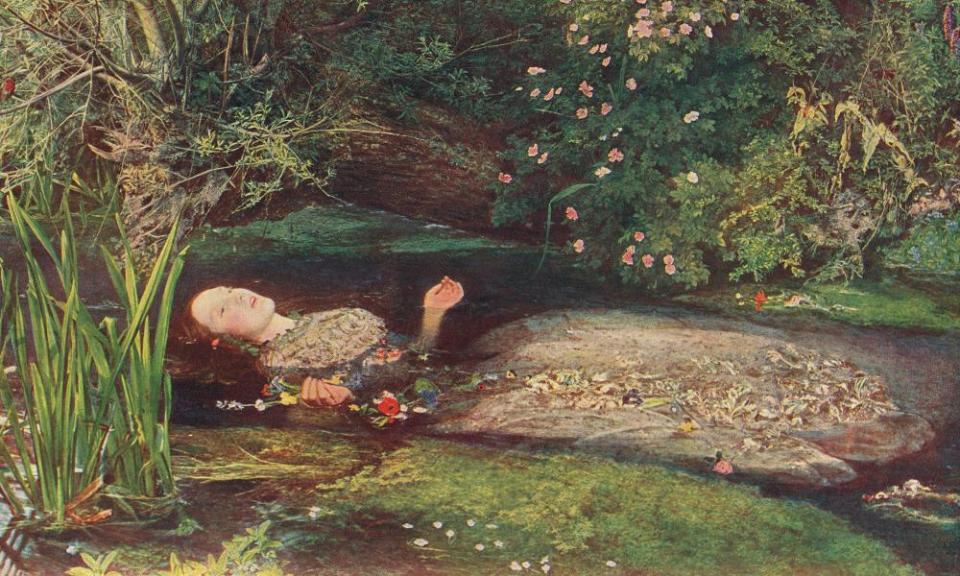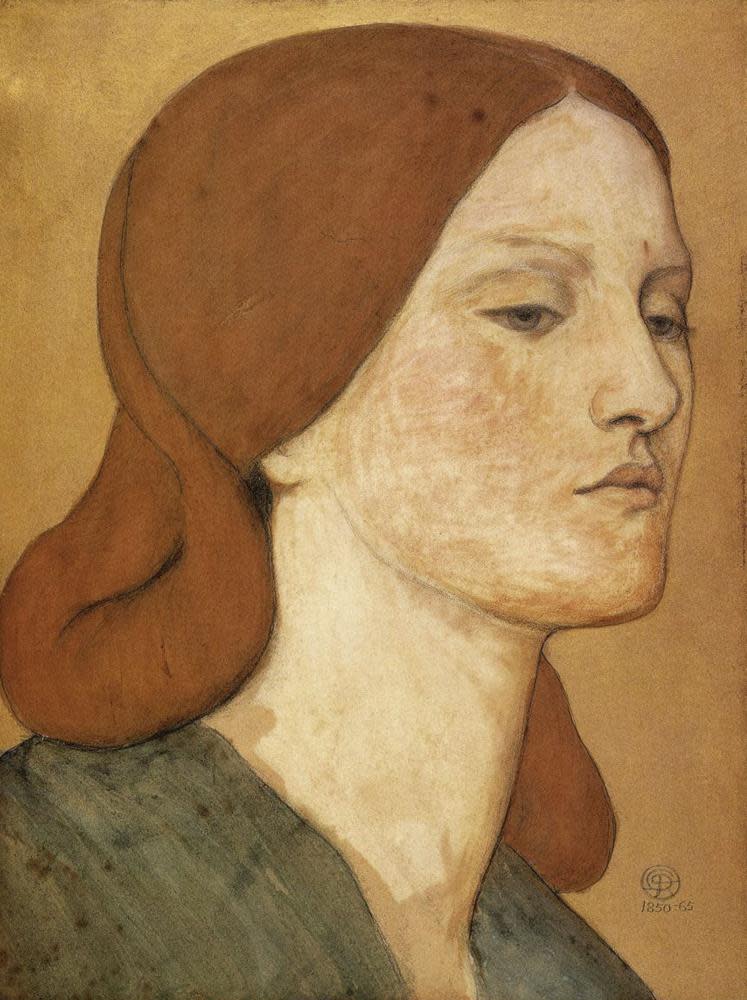Ophelia resurfaces: pre-Raphaelite muse is recognised as a skilled artist

She is immortalised as the drowning Ophelia in John Everett Millais’s celebrated 1850s painting and as the auburn-haired model for several pre-Raphaelite artists in the mid-19th century. After dying prematurely aged 32, Elizabeth Siddal was marked down for decades as a depressive and laudanum addict, and was portrayed as such in Ken Russell’s 1967 BBC film Dante’s Inferno – named after her husband, Dante Gabriel Rossetti.
More recently, she has been mythologised in several TV dramas and novels – even as a vampire victim.
Only now, with The Rossettis exhibition opening on 6 April at Tate Britain, will Siddal finally be judged for what she really was and achieved – a considerable artist in her own right.
Admittedly, she had some bouts of poor health and suffered, not surprisingly, after giving birth to a stillborn daughter in 1861. However, this exhibition, with several previously unseen works, will show Siddal as an independent woman who was not just a talented artist but also had a strong influence on the career of Rossetti.
“Siddal was for so long considered as either ‘just a model’ or as a ‘derivative artist’, who simply followed the male pre-Raphaelites,” says Carol Jacobi, curator of The Rossettis. “This is so inaccurate.”
Siddal was untrained as an artist, as a teenager working in clothes shops in central London where she taught herself to design dresses. She was introduced to the pre-Raphaelites just as the group formed in 1849, before meeting Rossetti and becoming the model in his Rossovestita portrait. In 1852, she sat for Millais’s Ophelia and other pre-Raphaelites such as William Holman Hunt.
She then began to draw and paint herself, encouraged by Rossetti and her patron, John Ruskin, who gave her an allowance. She also wrote poetry.
And yet during the 1850s, as she began a relationship with Rossetti – though one which it is not thought was consummated until their marriage in 1860 – her work was dismissed by the pre-Raphaelites as a “pale imitation” of Rossetti. There were even claims that Rossetti helped paint her watercolours. Regarded as an appendage to her husband, she remained unknown during her lifetime outside the small and bitchy pre-Raphaelite circle.
However, The Rossettis, featuring 17 of her drawings and watercolours, along with Jan Marsh’s forthcoming biography, Elizabeth Siddal: Her Story, plus new research by Glenda Youde, a Sheffield University historian, highlight her as a skilled artist.

They also prove that she had a real influence on Rossetti by comparing and contrasting the work of the two artists in the exhibition. “They were together, after all, in the same studio,” says Youde. “You can see her effect on the style in paintings which Rossetti did himself either during her lifetime, or especially afterwards.”
This view is supported by Marsh. “In many cases it was Rossetti who was adopting and responding to her ideas and execution,” she says.
The exhibition also contains a remarkable poem, dedicated to her by Rossetti. The Portrait, which illuminates the power of a portrait to bring back memories of a dead loved one, was one of several kept inside a leather-bound book that in 1862 Rossetti buried beside her body in Highgate cemetery in north London.
Seven years later the book was removed after the tomb was, controversially, opened. Owned for many years by the University of Delaware in the US, a loose sheet of paper with Rossetti’s original crossings-out and changes for The Portrait will be seen for the first time at the Tate. Alongside will be Rossetti’s most famous portrait of Siddal – Beata Beatrix.
After her death, Rossetti asked a friend to photograph about 60 of her drawings as another memory of her. Displayed at the Tate will be three pages of this album plus some glass negatives, again not shown before.
There is, however, one unsolved mystery. Siddal is known to have completed one self-portrait – a rendering showing her red locks and stern expression. Siddal painted it in 1853, but it has not been seen publicly for more than a century, although it was photographed about 50 years ago. This photograph is in the exhibition’s catalogue.
Both Marsh and Youde are convinced that someone in the Rossetti family, either in the UK or Italy, has it. Maybe this exhibition will inspire the owner to let it be seen publicly again.

 Yahoo News
Yahoo News 